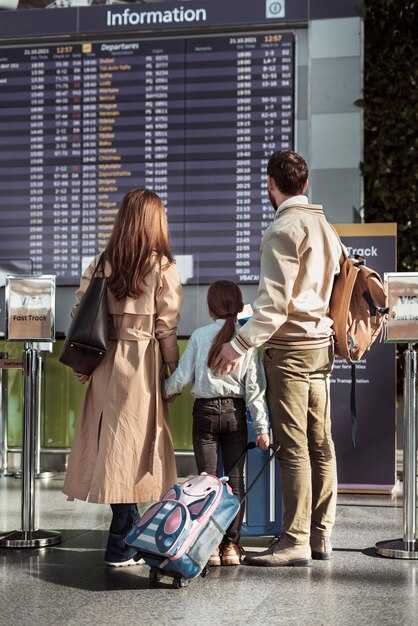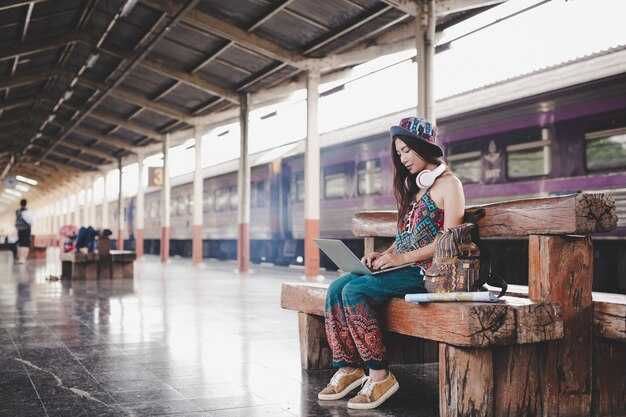Book your pickup directly and transfer to your hotel right after you land at YIA. This saves time and avoids long waits at the curb, giving you more control over your first hours in the city.
At YIA, follow the main signs to arrivals and baggage claim. weve mapped the most common locations for taxis and ride-hailing pickup, so you can head to the right queue without extra questions. The name and layout of the airport area are straightforward, and staff at the information desks can help you find your way.
Expect a smooth transfer if you arrive from surabaya with a national carrier. The pickup area sits in the arrivals hall, and drivers typically show up within 10 to 15 minutes after your landing; then you proceed with your driver to the curb.
Traffic around YIA changes by hour. Plan your exit from the terminal before peak periods, especially if you have a domestic flight. Inside the arrivals zone you’ll find some food options, and every location offers quick bites, so you can refuel without delaying your pickup.
What you want is a clear plan: share your driver’s name and car color, confirm the pickup point in advance, and have a backup option if your flight lands late. weve included the main steps to make that move from gate to curb smoother, and be aware of the limit on curbside waiting time in peak hours, so you can start exploring this city with confidence.
Yogyakarta YIA Airport Guide for Foreign Travelers: Tips & Practical Insights; 1 What Is Yogyakarta International Airport YIA
Book an official ride at the airport counters in the arrivals area to reach central Yogyakarta in about 45–60 minutes; outside traffic can affect time, especially during peak hours, so add a buffer that accounts for delays.
Yogyakarta International Airport YIA is the main gateway to the city and the surrounding cultural region. Located in Kulon Progo, it handles domestic and international flights and serves as the starting point for visits to sites such as Prambanan. For travelers with specific needs, the airport layout includes clear wayfinding and staff who can assist. For the latest counters, hours, and services, check the official website.
Arriving at YIA, follow signs to immigration, baggage counters, and the exit. Use the official ride points outside the terminal or pre-booked taxis to reach your hotel; this keeps the process friendly and predictable, and helps you manage the moment of arrival smoothly. Sometimes queues form, so plan ahead.
Bring essentials for the journey: travel documents, a small bottle of water, snacks, medicines, and any items you brought that support comfort. After security you can buy beverages and meals; plan time for a short walk or a ride to the city centre.
For cultural exploration, a visit to Prambanan makes a strong addition to a YIA stay. Several stops along the way let you experience temples, markets, and local cuisine; this can be a convenient day trip if flights align.
Keep this article as a quick reference before flights; bookmark the website and refer to the ultimate guide for arriving, transport, and practical tips to ensure a smooth stay in Yogyakarta.
What Is Yogyakarta International Airport (YIA)? Location, Terminals, and Runways

Plan to land at YIA by heading to Terminal 2 for international arrivals and Terminal 1 for domestic to board quickly and meet your needs. The airport sits about 40 kilometers west of central Yogyakarta, in the Kulon Progo regency, with fast road routes linking your location to the city and to popular day trips in the area. The surrounding area provides parking, car hire booths, and easy access to private transfers, giving you a good start to your trip. Knowing which terminal to use saves time and helps you enjoy your first activities in Jogja.
Terminals: YIA currently operates with two connected terminals. Terminal 1 serves domestic flights; Terminal 2 handles international services. Both share a modern, passenger-friendly layout with clear signage, dedicated baggage areas, and common transfer options. The design focuses on easy movement, short walking distances, and straightforward boarding areas. Accessibility features include ramps, elevators, accessible toilets, and staff assistance on request to accommodate disabilities. Inclusions such as free wifi, USB charging points, and a range of shops and places to eat support a comfortable stay in both the arrivals and departures areas. Customer desks are available to help you with directions, meet-and-greet, or to arrange airport transfercoms for a private pickup or group transport.
Runways: YIA operates with one active main runway, suitable for the typical mix of domestic and international traffic; a second runway is planned to increase capacity and open additional routes. The airfield supports efficient landings and takeoffs, with fast taxi routes to the terminals. For coming flights, check your airline’s gate and flight status on arrival, as weather or air traffic can influence ground time. The current setup keeps ground movements smooth, while the future expansion aims to broaden options for budget-conscious travelers and business travelers alike.
Practical tips: If you want a seamless handoff, use airporttransfercoms to arrange a private pickup from the arrivals area. Budget travelers can choose metered taxis or reputable ride-hailing apps; the price varies with distance and vehicle type, but there are good budget options. If you wonder about places to wait or eat, the terminal area offers lounges, quick bites, and places to rest. For disabilities, plan ahead to request assistance, ensuring an easy start to your stay in Yogyakarta.
Getting There: Transfer Options from Yogyakarta City to YIA (Taxi, Ride-Hail, and Public Transit)
For arriving travelers, the simplest, most convenient start is a taxi or ride-hail, providing easy, seamless transfers with a clean, direct route to YIA. Expect about 60–75 minutes from central Yogyakarta to the airport in light traffic; the center of the city will usually offer straightforward pickup at a predictable location, which helps you plan. Fare ranges depend on service and vehicle, but taxi and ride-hail are great options, with an opportunity to tailor the ride to your arrival time. weve included practical tips below to help you pick the right option and avoid extra stops or delays, even during peak hours.
Taxi from the City to YIA
Pickup locations include Malioboro Street, the Tugu area, or your hotel lobby; taxis are available in the city center. The driver uses a standard route to YIA; drop-off happens at the airport curb, with the option to coordinate a meeting point inside the terminal if needed. Fare typically ranges IDR 350,000–500,000, with tolls included in many services; cash is common, some providers offer card payment. Inclusions often cover tolls and basic luggage handling; additional charges may apply for oversized bags. This option provides a friendly, easy ride and a predictable arrival location near the center of the terminal area, which is a clear advantage for arriving travelers who value a full, direct transfer.
Ride-Hail and Public Transit: Flexible Options
Ride-hail: Open Gojek or Grab, set your pickup location, and request a driver. Theyll meet you at your hotel or a nearby pickup point, then drive you straight to YIA. Fare ranges IDR 250,000–450,000, depending on demand, time of day, and vehicle type, with the option to choose a larger car for extra comfort. This option is convenient and very flexible, with easy door-to-door transfers and wide coverage across the city. Public transit: Damri buses connect central Yogyakarta with YIA; board from Malioboro or nearby transit centers where you can buy tickets at counters or machines. Fare is around IDR 40,000–60,000 per person; travel time is roughly 90–120 minutes with several stops. Inclusions are minimal: usually one ride with luggage allowance that varies by operator; you may see additional charges for oversized bags. If you arrive during peak times, this can be a good, cost-effective option to enjoy local scenery and settle into your plans after arriving. Since schedules change, check the latest Damri timetable and plan your transfers to align with your activities in the city.
Arrival Process for Foreign Visitors: Passport Control, Visa Details, and Luggage Tips
Present your passport and visa documents immediately on arrival; this speeds through immigration and helps you reach your hotel faster.
Passport Control and Visa Details
When you reach the arrivals area at YIA, have your passport, visa status (e-visa code or visa on arrival), and the completed arrival form ready. If you hold an e-visa, show the confirmation code to the officer; VOA travelers should have the payment receipt or approval handy. Expect queues at peak times; keep documents together in a sleeve to make the process seamless. After passport control, head to baggage claim with your tag; if a bag is misrouted, the help desk will assist. There are friendly staff and clear signs guiding you to gojek counters or taxis for the final leg to your destination. There is no direct train link from YIA to central Yogyakarta; there are some options, including gojek, taxi, or private transfer. If you plan a full-day city visit, consider a pre-booked transfer that starts at the airport to simplify the route. Bring some local currency for small purchases and check your visa type inclusions to avoid surprises at the final step of arrival. There are facilities with features such as ATMs and currency exchange to cover basic needs, making the arrival faster for those departing toward cultural sites or your hotel.
Luggage Tips

Follow belt numbers to avoid delays and keep valuables in a carry-on; use a name tag and an easy-to-read contact if bags separate. Pack a change of clothes and essential meds in carry-on, and use a secure lock on checked bags. If you arrive with heavy luggage, assess hotel drop-off options or storage before you go out for a cultural late-afternoon or full-day plan; this gives you the opportunity to explore the city without dragging bags around. There are lockers and staff near the arrivals hall to help with drop-off or pickup, plus gojek counters for quick final-mile rides. For the final leg, gojek is a popular option to reach your hotel quickly and affordably; you can share the route and driver name in-app for safe, friendly service. Remember the limit on liquids and declare any items if required to avoid delays.
Inside YIA: Navigation, Security Queues, Lounges, Restrooms, and Dining
Plan to arrive 2.5 hours before your board time to secure a seamless experience at YIA. Check the official website or yogyakartatourcom for real-time updates on queue lengths, lounge access, and dining offers.
Navigation: Follow clearly marked signage, color-coded corridors, and interactive maps at information desks. Use these guides to reach counters quickly and avoid backtracking. For travelers aiming at Prambanan temple visits or a jomblang cave trip, staff can point you to transfer desks or door-to-door options just steps from the transit zone.
- Head to the Check-in and Security zones using the color-coded paths for faster movement.
- Ask at information counters if you need a printable map or a quick planning tip for your next hop.
- Keep your phone handy with a saved map from yogyakarta resources to minimize wandering in crowded spaces.
Security Queues: Expect longer lines during peak hours, especially near gate opens. Minimize time by completing online check-in, keeping documents ready, and placing liquids in a transparent bag for swift screening. If you arrive with family or accessibility needs, seek the designated lanes for a smoother process.
- Arrive early to reduce stress and board on time with confidence.
- Have boarding pass and ID accessible at the front of the queue for rapid verification.
- Follow staff directions and use dedicated lanes when offered to cut wait times.
Lounges: Lounges provide quiet seating, reliable Wi‑Fi, and a steady flow of beverages and snacks. Access options include memberships, day passes, or paid entry at the door. Check offers and hours on the website before you go; a short lounge stop can lift customer satisfaction and make a crowded day feel more comfortable.
- Choose a lounge near your gate to minimize last-minute rushing.
- Look for power outlets and ample seating to recharge devices before boarding.
- Grab a coffee, tea, or juices plus light snacks to bridge the wait until your flight.
Restrooms: Modern facilities with clear signage, ample lighting, and clean fixtures. Expect accessible stalls and baby-changing areas in major blocks, with regular cleaning cycles posted near entrances for transparency.
- Use the nearest clearly marked restrooms to avoid detours when you’re pressed for time.
- Keep essentials handy in a small pouch for quick refreshes between moments of peak activity.
Dining: A selection of counters and small kiosks offers Indonesian snacks, quick bites, and beverages. Look for local specialties and travel-friendly options that travel well, such as packaged snacks and bottled drinks. For a smoother transition to your next leg, consider grabbing a light meal or snacks before you board, and check the offers listed on the website or at on-site boards.
- Las mejores opciones incluyen bebidas frescas y bocadillos pequeños para mantenerte con energía durante las escalas.
- Los precios abarcan un rango casual, con algunos puestos que ofrecen ofertas combinadas para los viajeros que planean sobre la marcha.
- Cerca de las zonas de tránsito, encontrarás toques regionales que reflejan los sabores y la cultura de Yogyakarta.
Conectividad posterior a la llegada: tarjetas SIM, Wi-Fi, divisas y transporte terrestre a su destino
Recoge una SIM local en los mostradores del aeropuerto justo después de aterrizar para mantenerte conectado mientras te desplazas; es la forma más sencilla de navegar, reservar un transporte y consultar mapas en tiempo real. Es conveniente para muchos viajeros, y apreciarás la satisfacción de tener datos fiables desde el momento en que sales de la zona de llegadas.
Tarjetas SIM y opciones de Wi-Fi a la llegada
Elige un kit de inicio de Telkomsel, Indosat Ooredoo o XL Axiata en los mostradores oficiales de la zona de llegadas; calcula entre 25.000 y 50.000 IDR para la SIM y entre 10.000 y 100.000 IDR para recargar datos, dependiendo del paquete. Lleva tu pasaporte para registrarte y ten a mano la confirmación de la activación en tu teléfono o impresa. Los vendedores externos pueden ser más caros o poco fiables, así que quédate con los mostradores oficiales para obtener el mejor precio y fiabilidad. La eSIM opcional aún no es universal, por lo que una SIM física sigue siendo la opción más segura por ahora. Los paquetes de datos de 5 a 20 GB cubren muchos días de exploración de la ciudad, incluyendo viajes a lugares como el centro, Borobudur o Jomblang, con mapas sin conexión y aplicaciones de traducción. Existe Wi-Fi gratuito en el aeropuerto en algunas zonas, pero las señales varían; utiliza la SIM para una conexión estable. La atención al cliente suele ser en inglés en los mostradores, lo que ayuda a los visitantes extranjeros a elegir bien y evitar gastos excesivos. Si viajas con un plan predeterminado, compara algunas opciones en la página web del aeropuerto para asegurarte de conseguir un paquete más barato que se ajuste a tu itinerario.
Moneda, pagos y transporte terrestre a su destino
La moneda indonesia es IDR; lleve billetes pequeños para taxis, mercados y vendedores ambulantes. Los cajeros automáticos son comunes cerca del reclamo de equipaje y dentro de las terminales; verifique su tarjeta para conocer las tarifas de retiro internacional. Se aceptan tarjetas en los centros urbanos y en las tiendas más grandes, pero muchos puestos económicos aún prefieren el efectivo. Para mayor comodidad, habilite una billetera móvil local (GoPay, OVO o DANA) donde se acepte, particularmente en aplicaciones de transporte y tiendas más grandes. Cuando esté listo para llegar a su hotel o primera parada, utilice los mostradores de taxis oficiales; confirme su destino y la tarifa estimada antes de comenzar. Los taxis con taxímetro son comunes, y los viajes basados en aplicaciones (Gojek o Grab) pueden ser más baratos, aunque la disponibilidad varía según la hora. Si desea un presupuesto y costos predecibles, los traslados económicos o los traslados del hotel suelen ser los más baratos y sencillos, y puede reservarlos en el sitio web del aeropuerto o a través de su hotel en el centro de la ciudad. El autobús DAMRI es una opción aún más económica para llegar al centro de la ciudad; consulte los horarios en el sitio web del aeropuerto o pregunte al personal con anticipación. Para los planes de exploración a lugares como Jomblang, dedique tiempo adicional y coordine con su tarjeta SIM para la navegación y las confirmaciones en su teléfono. Este enfoque garantiza que se mantenga conectado, dentro del presupuesto y cómodo durante todo su transporte terrestre desde el aeropuerto hasta su destino.



Comentarios